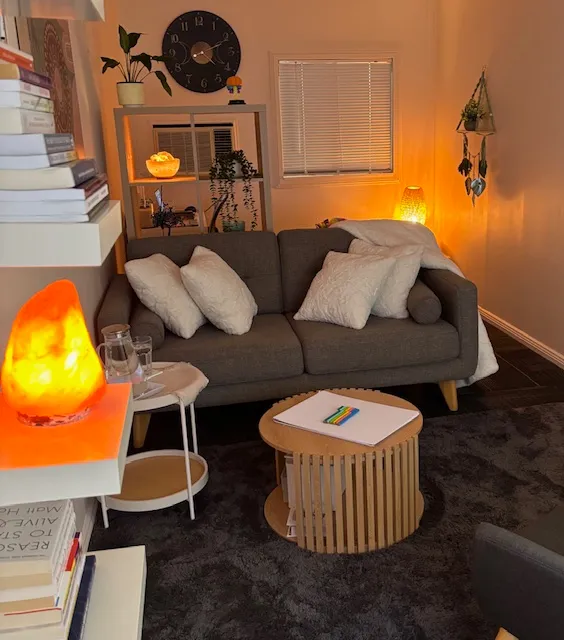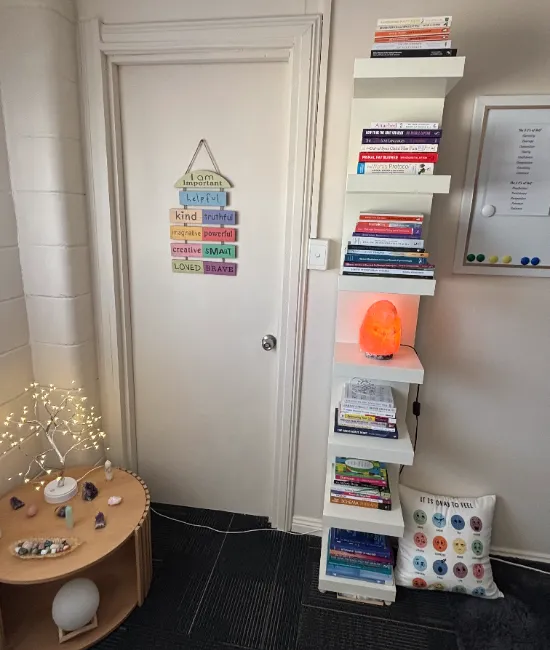Influences & Approach
My approach is informed by the work of many pioneers in trauma, attachment, and somatic healing, and by my ongoing commitment to learning, unlearning, and deepening my practice.
I work from the understanding that mind and body are not separate, they are one integrated bodymind system. This belief sits at the heart of how I support healing: attending to thoughts, emotions, physiology, and experience as interconnected.
Somatic Experiencing® (Peter Levine) has taught me to listen to the body’s natural rhythms and capacity for regulation, alongside the somatic trauma work of Manuela Mischke-Reeds, which honours the body’s wisdom in healing.
I integrate Internal Family Systems (Richard Schwartz, Frank Anderson) and IFS-Informed Somatic Therapy (Susan McConnell), bringing together parts work and body-based awareness. The mindful, somatic principles of Hakomi (founded by Ron Kurtz) also guide my way of working. Brainspotting (David Grand) offers an additional pathway for supporting trauma resolution through the brain-body connection.
The science of safety and connection underpins all that I do, through Polyvagal Theory (Stephen Porges), the research of Bessel van der Kolk on how trauma lives in the body, and the integration of parts work and somatic approaches by Janina Fisher.
I also draw on the compassionate insights of Gabor Maté on trauma, addiction, stress, and health; the foundational work of John Bowlby and Mary Ainsworth in attachment theory; and the research of Brené Brown and Kristin Neff on vulnerability, shame, and self-compassion.
Embodied Processing (developed by Matt Nettle and Ryan Hassan) thoughtfully integrates many of these influences, drawing on the wisdom of somatic psychotherapy, parts work, attachment theory, and nervous system science to offer a safe, body-based approach to trauma resolution. EP also recognises the role of spirituality in healing, not as doctrine, but as an honouring of the deeper, often wordless search for meaning, connection, and belonging.
The teachings of A.H. Almaas and the Diamond Approach are woven into this model, offering a pathway of inquiry into essence, presence, and the unfolding of the true self. This perspective reminds me that healing is not only about easing pain, but about returning to what is whole, true, and alive within us.
Alongside these psychotherapeutic influences, I am deeply inspired by the groundbreaking work of Dr. Terry Wahls on nutrition, neurological health, and autoimmune conditions. Her research highlights the vital role of nourishment, lifestyle, and cellular health in supporting well-being, a perspective that complements and enriches my understanding of mind-body healing.
I hold deep respect and gratitude for these teachers, thinkers, and pioneers. Their work continues to shape the field and has profoundly impacted my own practice, learning, and healing. It is important to me to honour their contributions and acknowledge the foundations on which my approach stands.
These and many more are the lenses through which I understand, hold, and walk alongside you. Whether we are working with parts, the body, memory, or meaning, my focus is always on supporting you to feel safer within yourself, with others, and in the world around you.
I believe being a therapist means staying engaged in my own inner work. Regular personal therapy, supervision, and professional development are, to me, not just best practice, they are an ethical responsibility. They help keep me grounded in curiosity rather than certainty, able to meet you not as the ‘expert’ on your life, but as a fellow human committed to walking this path with care and humility.
Together, we move at the pace your system is ready for, with deep respect for the courage it takes to heal.
Book Appointment





